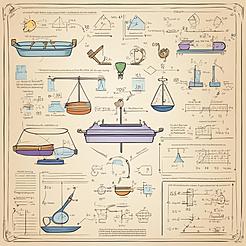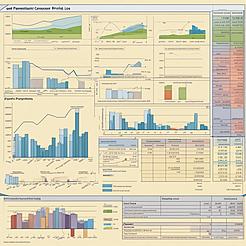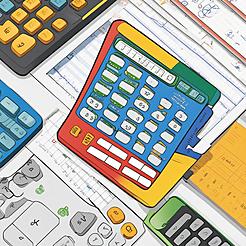
Practice Questions - Exploring Profit and Loss Scenarios:
1) Question:
A student buys a textbook for ₹500 and sells it for ₹600. Calculate the profit percentage made by the student.
Answer:
To calculate the profit percentage, we use the formula:
Profit Percentage = (Profit / Cost Price) x 100%
Given,
Cost Price (CP) = ₹500
Selling Price (SP) = ₹600
Profit = SP - CP = ₹600 - ₹500 = ₹100
Profit Percentage = (100 / 500) x 100% = 20%
Therefore, the student made a profit of 20%.
Explanation:
Understanding profit percentage is essential in business and everyday life. In this scenario, the student gained a 20% profit by selling the textbook for ₹600 after buying it for ₹500. This calculation helps in analyzing the financial outcomes of transactions.
2) Question:
A shopkeeper sells a toy for ₹800, incurring a loss of 10%. What was the cost price of the toy?
Answer:
To find the cost price, we use the formula:
Loss = (Loss / Cost Price) x 100%
Given,
Selling Price (SP) = ₹800
Loss Percentage = 10%
Let the Cost Price (CP) be x.
Loss = (10 / 100) x CP = 0.1x
SP = CP - Loss
800 = x - 0.1x
800 = 0.9x
x = 800 / 0.9
x = ₹888.89 (approx.)
Therefore, the cost price of the toy was approximately ₹888.89.
Explanation:
Calculating the cost price when a loss percentage is given is crucial for businesses to determine pricing strategies and analyze profit margins. In this case, the shopkeeper incurred a 10% loss when selling the toy for ₹800.
3) Question:
A fruit vendor bought 50 kg of apples at ₹30 per kg. He sold 30 kg of apples at ₹40 per kg and the remaining at ₹25 per kg. Calculate the overall profit or loss percentage for the vendor.
Answer:
To calculate the profit or loss percentage, we need to consider the total cost price and total selling price of all the apples.
Total Cost Price = (50 kg x ₹30/kg) = ₹1500
For the first 30 kg sold:
Total Selling Price = (30 kg x ₹40/kg) = ₹1200
For the remaining 20 kg sold:
Total Selling Price = (20 kg x ₹25/kg) = ₹500
Overall Profit/Loss = Total Selling Price - Total Cost Price
Overall Profit/Loss = (1200 + 500) - 1500 = ₹200
Profit Percentage = (200 / 1500) x 100% = 13.33%
Therefore, the vendor made a profit of 13.33%.
Explanation:
This scenario involves selling apples at different prices, requiring the calculation of the overall profit or loss percentage. Understanding such scenarios helps in managing inventory and pricing strategies effectively in business.














